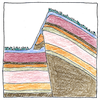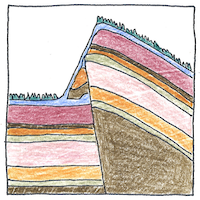Eduard Suess
geophysics

|
Mountain formation
An aspiration, a mystery— the high mountains the mountains ranges implied great movements of the continents. Eduard Suess lined up the mountains according to their ages and was the first to consider a belt of mountains as a whole proposed that a supercontinent in the southern hemisphere connected ranges that spanned South America, Africa, India, Australia, and Antarctica, but because a mechanism for moving continents had not been discovered Seuss thought that the land sunk into the oceans between them.
Ecology
We began to consider our planet as a whole and saw that changes had been wrought upon the face of the earth of dramatic and permanent effect upon which all life depends and began to connect the causes and effects.
Distant blue
Were a thing so big and far enough away for us to see it as a whole comprehending its beauty in the blue distance in its immensity then we might see it effects us not from esthetic balance like a work of art, for it doesn’t need balance, but because its size is incomprehensible and remains incomprehensible for centuries.



In his textbook The Face of the Earth, Eduard Suess introduced the concept of the biosphere for the conditions that promote life. Connecting mountain ranges using fossils of the extinct glossopteris gymnosperms speaks of Suess’s ability to comprehend the whole from its parts.
See also in The book of science:
Readings in wikipedia: